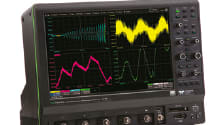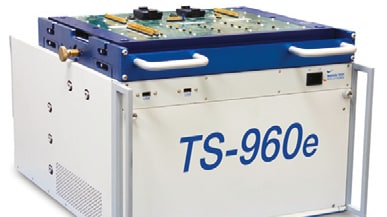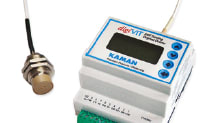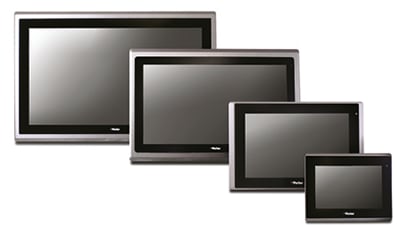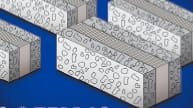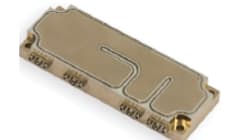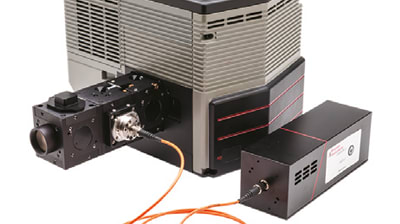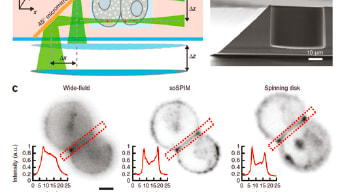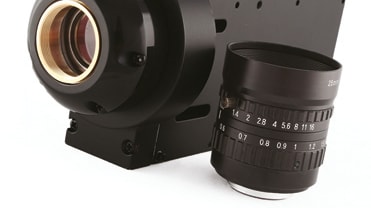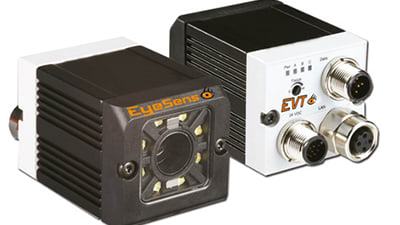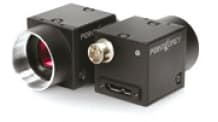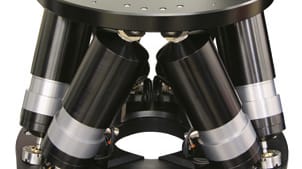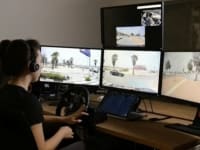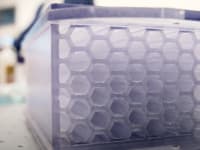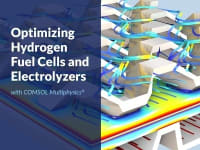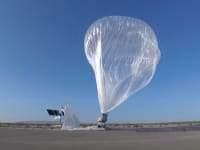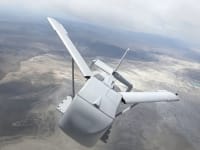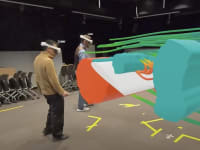Stories
61
0
8490
30
Question of the Week: Aerospace
Will we see a flying car transportation service?
This week’s Question: Ride-hailing company Uber recently released a white paper outlining its new transport service: the flying car. The company envisions a “network of small, electric aircraft that take off and land vertically.” The proposal aims to use airspace to relieve transportation...
News: Medical
By using lasers to treat graphene, Iowa State University researchers have found new ways to enable flexible, wearable, and low-cost electronics. Fabricating inkjet-printed, multi-layer graphene...
Articles: Sensors/Data Acquisition
The technologies NASA develops don’t just blast off into space. They also improve our lives here on Earth. Life-saving search-and-rescue tools, implantable medical devices, advances in commercial aircraft safety,...
Products: Test & Measurement
Measurement Computing, Norton, MA, offers the TC-32 and TC-32- EXP temperature monitors for thermocouple (TC) measurement. Providing both Ethernet and USB ports, the TC- 32 provides 32 channels of 24-bit resolution for...
Products: Manufacturing & Prototyping
Teledyne LeCroy, Chestnut Ridge, NY, introduced HDO9000 high-definition oscilloscopes with HD1024 high-definition technology. Features include OneTouch user interface, 15.4" capacitive touchscreen, 10- bit resolution, bandwidths...
Products: Semiconductors & ICs
Marvin Test Solutions, Irvine, CA, released the TS-960e PXI Express semiconductor test platform that features test capabilities for RF devices and SoC applications. It features 256 125-MHz digital I/O channels with...
Products
Pasternack, Irvine, CA, offers semi-rigid test probes for testing microwave circuits. By soldering the outer conductor to the signal ground and the exposed center conductor to the trace carrying the signal of interest, sampling...
Products: Manufacturing & Prototyping
To facilitate materials testing on the mesoscale, Psylotech, Evanston, IL, offers the TS™ modular platform that validates material models across 6 orders of magnitude of force and length scales. Users can discern NIST-traceable...
Products: Manufacturing & Prototyping
KAMAN Precision Products, Colorado Springs, CO, offers the digiVIT non-contact position measuring system for monitoring movement, position, vibration, alignment, or deflection. The eddy current sensor for...
Products: Electronics & Computers
ACCES I/O Products, San Diego, CA, announced the USB-104-IHUB rugged, industrial-strength 4-port isolated USB hub that features Tru-Iso™ signal isolation up to 4kV, temperature operation from -40 to 85 °C, high-retention USB...
Products: Manufacturing & Prototyping
The OMEGA® K-SS Series tongue operated safety interlock switches from OMEGA Engineering, Stamford, CT, are designed to fit to the leading edge of sliding, hinged, or liftoff machine guards to provide positively...
Products: Manufacturing & Prototyping
Pickering Interfaces, Clacton-on-Sea, UK, offers Switch Path Manager™ signal routing software that simplifies signal routing through switching systems, and automatically connects system endpoints. CLOSE and OPEN...
Products: Software
Parker’s Electromechanical and Drives Division North America, Rohnert Park, CA, released the XT Parker’s Xpress™ Power Station operator interface with Xpress 4.1 runtime and development software. The solid-state device...
Products: Manufacturing & Prototyping
Dymax Corp., Torrington, CT, offers GA-201, a colorless, UV/visible-light-curable, tack-free, moisture- and chemical-resistant FIP/CIP gasket for sealing heatsensitive substrates. The low-durometer, high-elongation, silicon-free, and UL...
Products: Manufacturing & Prototyping
Overmolding Service
Proto Labs, Maple Plain, MN, has launched an overmolding service. Product designers and engineers use overmolding to improve grip and durability, dampen vibration, and add two-color aesthetics to parts. Overmolded parts go through a multi-step process that results in common products like tool handles, personal care products,...
Products: Test & Measurement
SL Power Electronics, Ventura, CA, announced the TE240 Series external power supplies. The single-output models are designed for integration with test and measurement equipment and industrial applications. Features include up to...
Products: Electronics & Computers
Fujipoly® America Corp., Carteret, NJ, offers Fujipoly® Self-Supporting Sponge Connectors for connecting LCD displays to circuit boards. Each connector is made from an electrically conductive Zebra® core that is supported...
Products: Software
EPLAN Software & Services LLC, Schaumburg, IL, released EPLAN Platform version 2.6 that includes features for terminal design and project data management, the representation of piping in fluid power...
Products: Electronics & Computers
APEM, Vista, CA, introduced LK Series keylock switches available in nickel-plated or black overmolded barrel shutter and key. The multi-position switches are available in momentary and maintained functions, and in single or...
Products: RF & Microwave Electronics
The THOR-16000-XA multi-output frequency synthesizer from EM Research, Reno, NV, features a single 800-MHz and dual 16-GHz RF outputs. The unit locks to an external 50-MHz reference and exhibits low phase noise at both RF...
Products: Photonics/Optics
Princeton Instruments (Trenton, NJ) launched the FERGIE ™ spectroscopy system, a fully integrated, aberration-free spectrograph with a built-in, low-noise, cooled detector in an 11 × 7 × 8" profile. Thanks to a...
Products: Photonics/Optics
Laserglow Technologies (Toronto, Canada) has developed the Cyanea™ Series of Collimated Diode Lasers that are tuned to emit low optical noise, low duty cycle, and clean pulse shapes in the 470 nm spectral range, which...
Products: Imaging
Sierra-Olympic Technologies (Hood River, OR), supplier of infrared (IR) and thermal imaging components and cameras, has introduced the Oculus surveillance systems from Silent Sentinel, Ltd. (Rocklin, CA). The new,...
Products: Photonics/Optics
An innovative microfabrication technique used to produce a mirror array that both directs the excitation beam and holds the sample may revolutionize the field of 3D super-resolution mi - croscopy. The Single-Objective...
Products: Imaging
The Imaging Photon Camera from PHOTONIS (Sturbridge, MA) operates under light-starved conditions. The device features micrometer resolution, picosecond timing, a full 18-mm wide field of view, and a count rate up to 5MHz (with no...
Products: Photonics/Optics
Vision Sensors EVT’s (Karlsruhe, Germany) new EyeSens vision sensors are available as greyscale or color camera and integrate easily into existing systems. A variety of available resolutions makes it possible for EyeSens...
Products: Photonics/Optics
Photometrics® (Tucson, AZ) has announced the Prime 95B™ Scientific CMOS camera. The Prime 95B camera, built on the GSENSE400BSI-TVISB sensor, combines backside illumination (BSI) technology with large pixels and...
Products: Imaging
Point Grey (Richmond, BC, Canada) has announced the Blackfly S series of USB3 Vision and GigE Vision cameras. The 5 MP Blackfly S BFS-U3-51S5 model uses the Sony Pregius IMX250 global shutter CMOS sensor, featuring 2448 × 2048...
Products: Imaging
Aerotech’s (Pittsburgh, PA) HexGen™ hexapods represent a significant advance in six-degree-of-freedom positioning performance. The HEX500-350HL is driven by AC brushless, slotless servomotors and actuated with six high-accuracy...
Top Stories
Blog: Manufacturing & Prototyping
2025 Holiday Gift Guide for Engineers: Tech, Tools, and Gadgets
Blog: Power
Using Street Lamps as EV Chargers
INSIDER: Semiconductors & ICs
Scientists Create Superconducting Semiconductor Material
Blog: Materials
This Paint Can Cool Buildings Without Energy Input
Blog: Software
Quiz: Power
Webcasts
 Upcoming Webinars: AR/AI
Upcoming Webinars: AR/AI
The Real Impact of AR and AI in the Industrial Equipment Industry
 Upcoming Webinars: Motion Control
Upcoming Webinars: Motion Control
Next-Generation Linear and Rotary Stages: When Ultra Precision...
 Podcasts: Manufacturing & Prototyping
Podcasts: Manufacturing & Prototyping
SAE Automotive Engineering Podcast: Additive Manufacturing
 Podcasts: Defense
Podcasts: Defense
A New Approach to Manufacturing Machine Connectivity for the Air Force
 On-Demand Webinars: Manufacturing & Prototyping
On-Demand Webinars: Manufacturing & Prototyping
Streamlining Manufacturing with Integrated Digital Planning and Simulation





